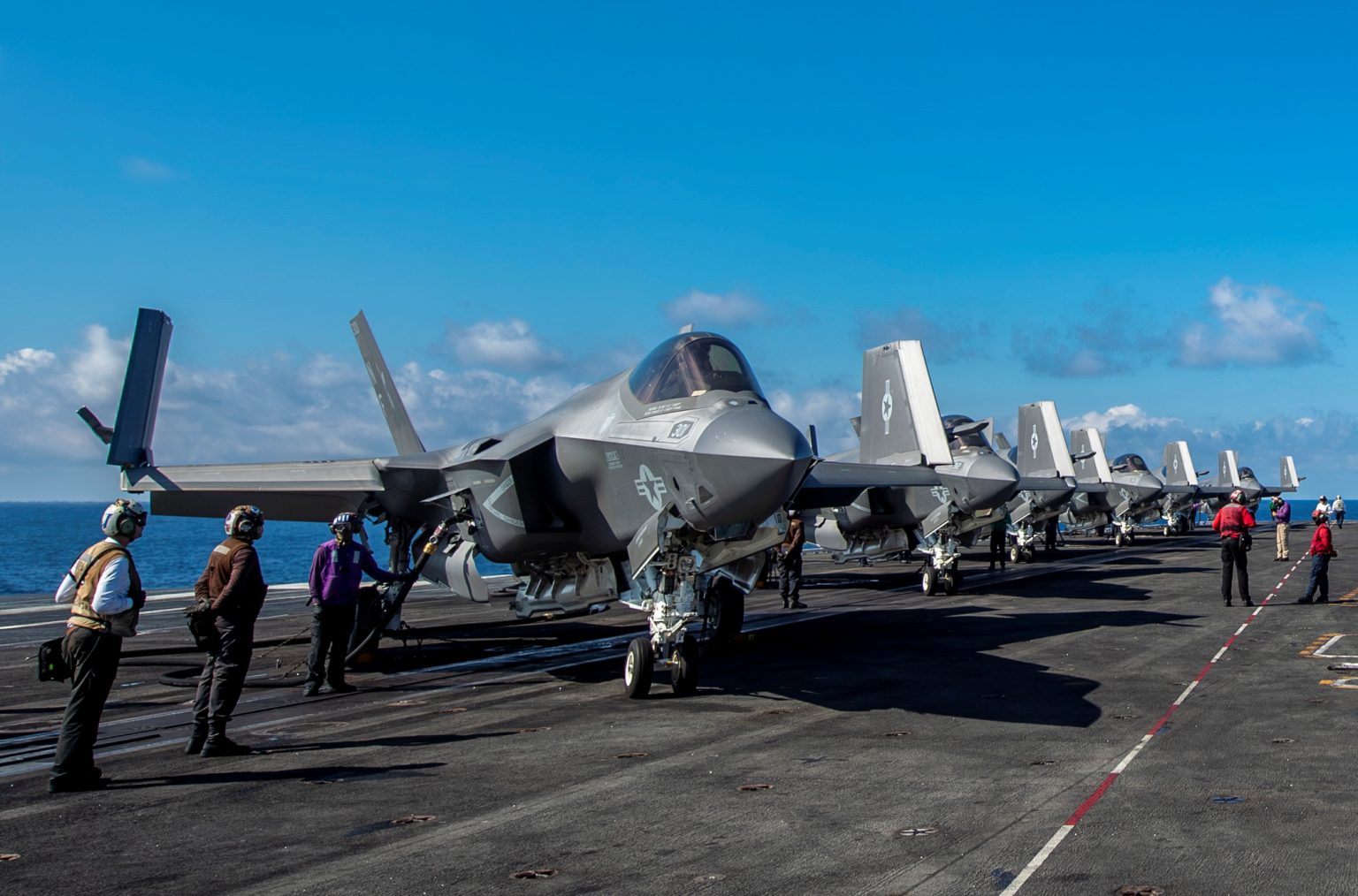The deployment of six additional F-35C Lightning II fighter jets to the USS Carl Vinson, a nuclear-powered aircraft carrier operating in the Philippine Sea, marks a significant bolstering of U.S. military presence in the Western Pacific. This reinforcement follows closely on the heels of a large-scale Chinese military exercise conducted around Taiwan, a self-governing island that China claims as its own territory. The F-35Cs, assigned to the Strike Fighter Squadron 147 based in Japan, are known for their advanced stealth capabilities and long-range strike potential, representing the cutting edge of U.S. naval aviation. Their arrival underscores the ongoing strategic competition between the U.S. and China in the region and the American commitment to maintaining a credible deterrent against potential Chinese aggression. The timing of the deployment, immediately following the Chinese exercises, sends a clear message of resolve and underlines the importance of the Western Pacific to U.S. strategic interests.
The Chinese military exercises, involving approximately 90 ships and spanning three days, focused on areas surrounding Taiwan, including the East China Sea, South China Sea, and islands near Japan. These exercises, viewed as a demonstration of China’s growing military might and its resolve to assert its claims over Taiwan, have raised concerns in the region and beyond. The exercises highlight the volatile nature of the Taiwan Strait and the potential for miscalculation and escalation. The U.S. considers Taiwan a key partner in the region and has expressed its commitment to supporting Taiwan’s self-defense capabilities, although it maintains a policy of strategic ambiguity regarding direct military intervention in the event of a Chinese attack. This ambiguity is designed to deter China while also avoiding a commitment that could escalate tensions.
The F-35C Lightning II is the U.S. Navy’s most advanced carrier-based fighter jet, designed for air superiority and power projection. Its stealth technology allows it to operate undetected in contested airspace, giving it a significant advantage in potential conflicts. The aircraft also boasts a long operational range and a substantial weapons payload, making it a versatile and potent asset in a variety of scenarios. The deployment of additional F-35Cs to the USS Carl Vinson enhances the carrier’s ability to project power and deter potential adversaries, contributing to the overall U.S. military presence in the region. This deployment reinforces the U.S. Navy’s commitment to maintaining a technological edge over its rivals and ensuring its ability to operate effectively in contested environments.
The strategic importance of the Philippine Sea and the surrounding waterways is underscored by the current tensions. The Miyako Strait and the Luzon Strait, located near Taiwan, serve as vital maritime passages connecting the East China Sea and the South China Sea with the wider Pacific Ocean. These straits are critical for naval and air force deployments, and their proximity to Taiwan makes them focal points in the ongoing strategic competition between the U.S. and China. The U.S. Navy’s presence in the Philippine Sea, including the deployment of the USS Carl Vinson and its enhanced air wing, aims to safeguard these crucial maritime routes and deter any attempts to disrupt the free flow of trade and movement in the region. The presence of the carrier strike group serves as a deterrent to any potential Chinese aggression and reinforces the U.S. commitment to maintaining a free and open Indo-Pacific region.
The Chinese Defense Ministry’s response to its military exercises reiterated its stance on Taiwan, claiming the right to conduct exercises as needed and reaffirming its commitment to “national reunification,” including the use of force if necessary. This response highlights the deep divide between China and Taiwan, as well as the potential for conflict. China views any move by Taiwan towards formal independence as a red line, and its recent exercises serve as a warning to both Taiwan and the U.S. The U.S., while acknowledging China’s claim to Taiwan, also supports Taiwan’s right to self-defense and has pledged to assist in maintaining its security. This delicate balance underscores the complexities of the U.S.-China relationship and the potential for miscalculation in the region.
The deployment of the USS Carl Vinson and its enhanced air wing, including the additional F-35Cs, reflects the U.S. Navy’s commitment to maintaining a robust presence in the Western Pacific and its resolve to counter China’s growing military influence. The U.S. Navy’s operations in the region are designed to deter potential threats, promote regional stability, and ensure the free flow of trade and movement through vital maritime passages. The timing of this deployment, following the Chinese military exercises around Taiwan, sends a strong signal of U.S. resolve and underscores the importance of this strategically vital region. The deployment also highlights the ongoing military modernization efforts of both the U.S. and China, and the potential for these advancements to further complicate the already tense relationship between the two superpowers.

